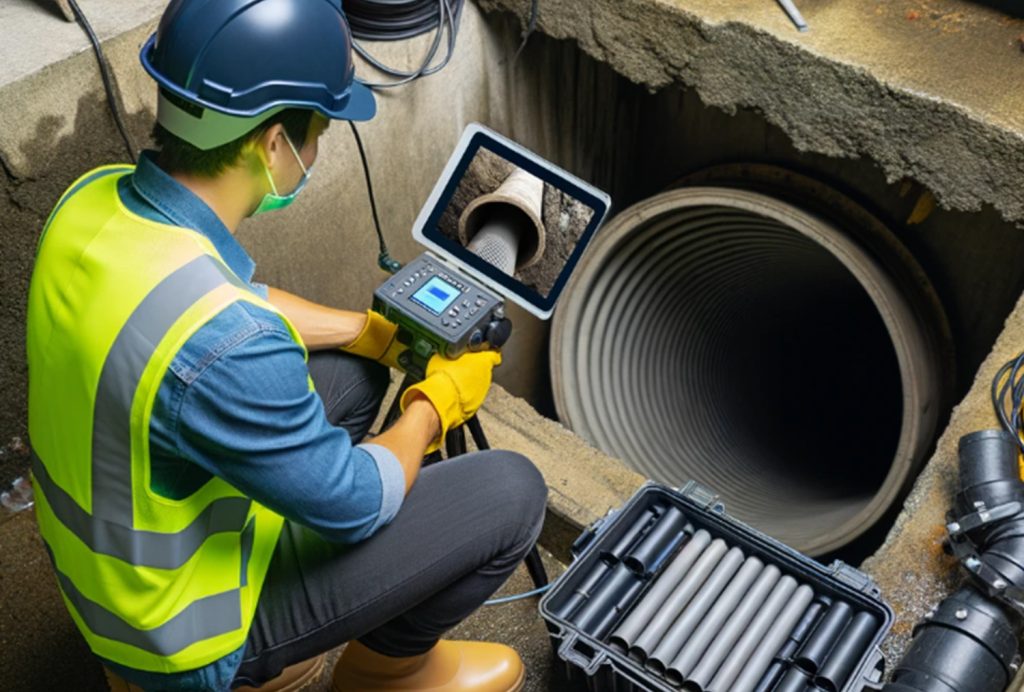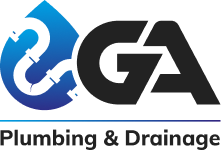Proper drainage is essential for maintaining the structural integrity, safety, and longevity of any property. Whether you’re dealing with water pooling in the yard, a damp basement, or soil erosion, choosing the right drainage system can make all the difference.
In this blog post, we’ll explore the most common types of drainage systems, including French drains, surface drains, trench drains, and downspout drainage, and explain when each one is most effective. Whether you’re planning a new build or addressing existing water issues, this guide will help you make informed decisions about your drainage system installation.
1. French Drains: Best for Subsurface Water Control
What It Is:
A French drain is a gravel-filled trench with a perforated pipe that redirects groundwater away from specific areas. It’s typically installed underground and slopes gently to encourage water flow away from your property.
Best Used When:
- Your basement or crawl space is damp
- Water is collecting near your foundation
- You have poorly draining soil (like clay)
- You want a hidden solution that doesn’t affect the landscape’s appearance
Why It Works:
French drains target subsurface water, preventing it from accumulating beneath your home or lawn. They’re ideal for sloped areas and foundation protection.
2. Surface Drains: Best for Fast Rainwater Removal
What It Is:
Surface drainage involves the use of grates, basins, and shallow channels to collect and redirect water off the ground’s surface. These systems often connect to underground piping to carry water away from the property.
Best Used When:
- You see puddles or standing water after rain
- Your yard has low spots or uneven terrain
- Water flows toward patios, driveways, or entryways
- You need quick drainage for heavy rainfall
Why It Works:
Surface drains are highly effective in areas with frequent or heavy rains, as they quickly collect and move water off the topsoil, preventing erosion and flooding.
3. Trench Drains: Best for Driveways, Patios & Commercial Settings
What It Is:
A trench drain (also known as a linear drain or channel drain) is a long, narrow system embedded in concrete or hardscaped areas. It features a grate on top and a channel underneath to direct water away.
Best Used When:
- You want to prevent water pooling on driveways, walkways, or patios
- In parking lots or loading docks
- Around swimming pools or sports courts
- To stop water from entering garages or warehouses
Why It Works:
Trench drains offer wide-area surface water control and are perfect for flat surfaces where water tends to flow horizontally. They can handle large volumes of runoff quickly and efficiently.
4. Downspout Drainage: Best for Roof Runoff Management
What It Is:
This system involves extending your roof’s gutter downspouts into underground piping that carries rainwater away from your home’s foundation. Often combined with catch basins or pop-up emitters at the end.
Best Used When:
- You have overflowing gutters during storms
- Water is eroding the soil near your foundation
- Your home has sloped landscaping near the walls
- You want to avoid basement leaks from roof runoff
Why It Works:
Downspout drainage systems prevent water from pooling at the base of your home by diverting it safely away, minimising the risk of basement flooding and structural damage.
5. Slope Grading and Swales: Natural Drainage Support
What It Is:
Grading involves shaping the land so that it slopes away from buildings. Swales are shallow, vegetated channels that guide water across a lawn or landscape to a drainage outlet.
Best Used When:
- You want an eco-friendly solution
- Your property has a gentle slope
- You’re landscaping or building a rain garden
- You need to meet local stormwater regulations
Why It Works:
Grading and swales work with gravity to naturally redirect water without mechanical systems. They’re ideal for large lawns and properties where aesthetics matter.
How to Choose the Right Drainage System
Choosing the correct drainage system depends on several factors:
| Factor | What to Consider |
| Type of water problem | Surface vs. subsurface |
| Location | Yard, driveway, basement, etc. |
| Soil type | Clay soils hold more water |
| Budget | French drains cost more than surface drains |
| Aesthetics | Do you want visible or hidden solutions? |
| Maintenance level | Some systems require periodic cleaning |
Consulting Experts for Proper Installation

While some minor drainage solutions can be DIY-ed, professional drainage system installation ensures that:
- The slope and layout are accurate
- Materials meet local building codes
- Systems are integrated with existing infrastructure
- Long-term performance and durability are guaranteed
A qualified drainage contractor can assess your property, recommend the right solution, and install it efficiently, saving you from costly repairs down the road.
Final Thoughts
From French drains to trench drains, and surface systems to downspout solutions, each drainage system has its strengths. Understanding the problem you’re facing is the first step toward solving it effectively.
If you’re unsure which drainage solution is best for your home or business, consulting a professional for drainage system installation is always a smart move.






